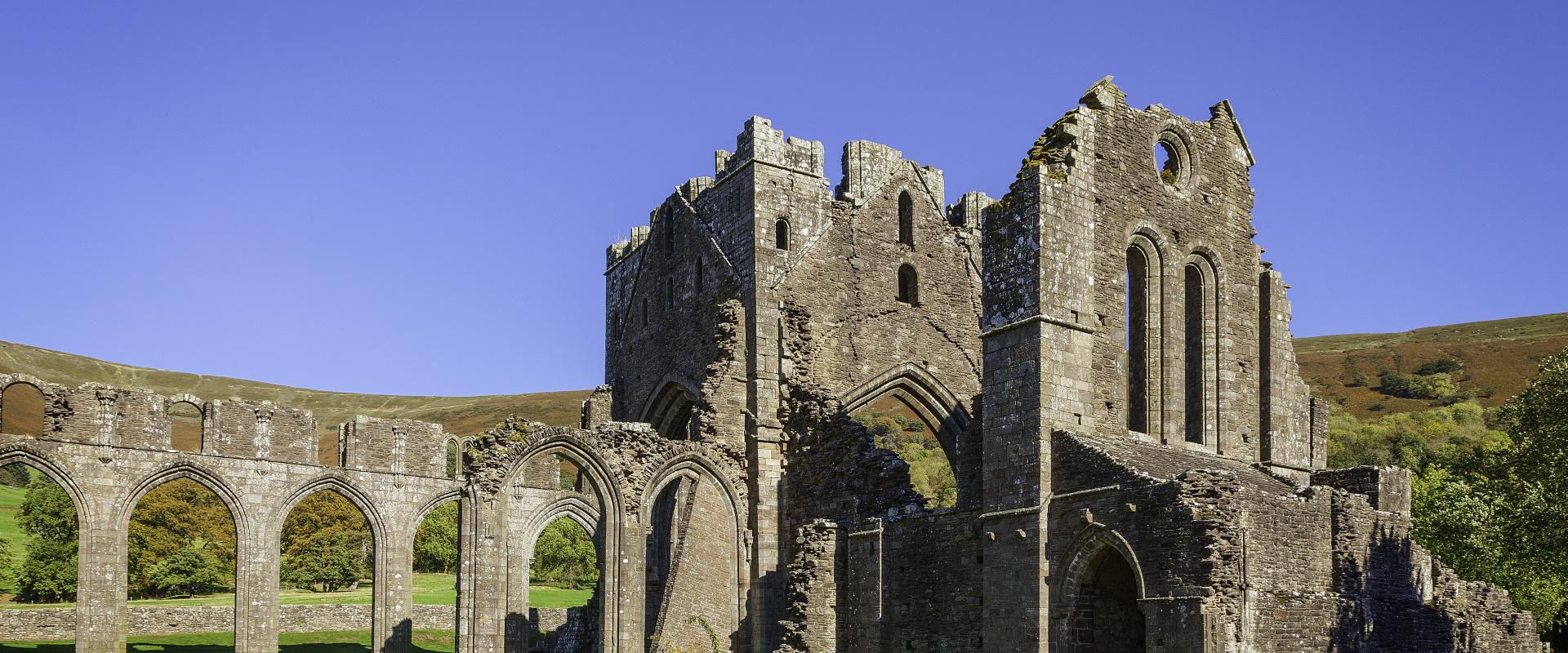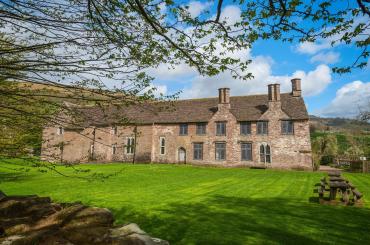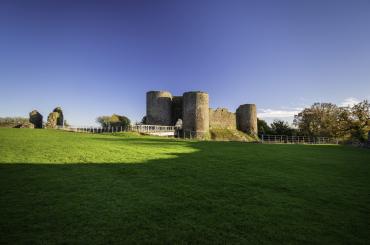Llanthony Priory

Visitor notice
Llanthony Priory is currently closed due to poor weather conditions.
We are monitoring the situation and will update you when it is safe to visit.
Thank you.
A timeless treasure
If there’s a better religious site ‘truly suited to the monastic life… in a wilderness far removed from the bustle of mankind’ we’d like to know. Those were the words of Giraldus Cambrensis, Gerald of Wales, the 12th-century traveller and chronicler. Remote Llanthony, locked away in a dramatic location in the Vale of Ewyas beneath the brooding borderland Black Mountains that rise abruptly from this evocative ruin, still radiates that spirit of isolation and contemplation.
Norman knight William de Lacy founded a hermitage here when he — untypical of the times — abandoned war and embraced religion. By 1118 Llanthony had become a monastery of Augustinian canons, which continued until it was suppressed in 1539.
Although now a 900-year-old ruin, it’s easy to see from these extensive remains that Llanthony was one of Wales’s great medieval buildings. In particular, its former magnificence lives on in the surviving richly decorated red stonework and superb row of pointed archways, which frame a scene that has changed little since de Lacy’s times.
Opening times & prices
Opening times
| 1st April - 31st March | 10am-4pm |
|---|---|
|
Last admission 30 minutes before closing Closed 24, 25, 26 December and 1 January |
|
Visitor information
Assistance dogs only
Assistance dogs only within the monument.
Outside the priory grounds is a dog friendly area with plenty of walks.
Bikes access
Bike storage area available in car park or close to site.
Car park
Access is a short distance from car park (approx. 100 metres). Limited wheelchair access.
Parking for approx.30 cars, no dedicated disabled spaces.
Walking difficulty
Terrain: Level 1 – Accessible
Drone policy
Please read our policy information about flying drones at Cadw monuments: read the guidance
No smoking
Smoking is not permitted.
Health & Safety
The majority of this site is flat, you will need to climb a set of small wooden steps to venture around to the furthest side of the priory.
There is no handrail provided as the steps are very short and shallow. The grass may be muddy / slippery during poor weather conditions.
Please be mindful when exploring areas with low level stone remains as these may present a trip hazard.
Please do not climb upon the monument, naturally there are areas where there are hidden drops.
As with all ancient monuments there is always a risk of stones being dislodged in bad weather, however, we manage this through extensive monitoring.
Climbing may result in serious injury.
There are several wild plants and flowers, although these are great pollinators, they may be poisonous to visitors and animals, we strongly advise you not to touch or allow dogs to eat any vegetation.
Please watch our health & safety film before visiting Cadw sites.
Iechyd a Diogelwch / Health and Safety
Please report any anti-social behaviour such as climbing, setting fires, graffiti etc. to CadwAccidentsReports@gov.wales
The following signs can be found around the site at key areas of risk, please pay attention where appropriate.
Falls from height
Slippery or uneven surfaces
Falling masonry
Directions
Google Mapwhat3words: ///shampoos.rollers.photocopy
Unlimited access to Wales' past
Join Cadw for as little as £2.00 a month and gain unlimited access to over 100 historical sites.
Enjoy the many benefits of Cadw membership
- 10% off Cadw gift shops
- 50% off entry to English Heritage and Historic Scotland sites
- FREE entry to English Heritage and Historic Scotland on renewal
- FREE entry to Manx National Heritage properties
- FREE membership pack including car sticker and full colour map

